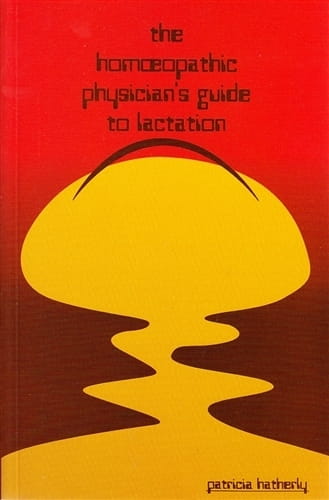Patricia Hatherly, who enjoys the unique perspective of being a Homoeopath as well as a Lactation Consultant, has worked extensively with mothers and babies for 30 years. During this time she has amassed a wealth of clinical experience in dealing with all manner of clinical issues relating to breasts and lactation. It is her desire, in the writing of this book, to share some of this knowledge with her colleagues and she attempts to bring some up-to-date perspectives to a subject which, in homoeopathic literature, tends to be perceived from an archaic and, occasionally, a somewhat erroneous perspective. In 2002 Patricia supervised the proving of Lac Maternum. Her clinical experience in lactation and birth as well as her extensive work with Lac Humanum gives her the ability to differentiate between these two remedies made from human milk, the appropriate milk for Homo Sapiens. She gives insight into how these two very important sarcodes complement one another and how they serve to assist all humans to maximise their potential.
- Author: Patricia Hatherly
- ISBN: 9780975203200
- 278 pages
- Paperback
- Published in 2004
- Printed in Australia
Reprinted with the permission of The ARH from 'Homeopathy in Practice' magazine, Autumn 2009 edition. Reviewed by Kerry Larkman RSHom.
This is another opportunity to praise a wonderful book about the murky sphere of breastfeeding.
Patricia Hatherly is an experienced lactation consultant, a homeopath, a teacher and also an enthusiastic researcher of Lac remedies. As a mother totally committed to breast-feeding herself, she has managed to sing the praises of human lactation with the eye and clinical perspective of the scientist.
With this book I have taken my time to read and enjoy much new information. Research has been thorough and each chapter has an extensive list of references.
Prefaced with stories from Ancient Egypt to the Middle Ages, when most wealthy women didn't breast-feed their children, it is still considered to be a delicate area in certain circles today, and the discussion about where, when and up to what age breast-feeding is acceptable flares up now and again.
The book gives excellent detail about the anatomy and physiology of the breast and breast milk, and challenges the reader to reflect and explore our materia medica to check remedies which are indicated for any possible situation that feeding mothers might encounter.
There are interesting comparisons of mothers' milk in well-nourished populations with those in poorly nourished populations. Interesting charts show basically that the constituents of breast milk are similar worldwide, though Vitamin B12 Thiamine and Ascorbic may be affected by deficient diets. 90% of mothers who produce 20g of fat in their breast milk will feed more successfully and for a longer time, and their babies will have less reflux and colic.
Colostrum is the initial secretion from the breast, which is so essential for neonates. It is rich in immunoglobulins, and contains ten essential amino acids. In premature babies the nitrogen content is higher to maximise the chance of survival. It acts as a laxative to clear the intestines of meconium and is lower in fat than mature milk. Vitamin K is higher in colostrum than mature milk. This is essential as protection from haemorrhagic disease. In today's world, with improved maternal diets, we should be confident that the 'routine practice of Vitamin K injections is not necessarily indicated'.
Once you learn about the composition of breast milk in detail, I am sure you will be amazed. The huge benefits to mother and baby mentioned are not only physical but also psychological, with references to Erikson's eight stages of man. Stage 1 lasts until 18 months and is labelled trust vs mistrust. Breast-fed children develop into more 'mature secure and assertive individuals', with more protection from infectious diseases. Mothers have reduced risk of breast and ovarian cancer. In the third world, breast-feeding is essential for survival in the newborn. There are useful chapters on how to establish feeding for the mother, and many valuable hints of potential indicated remedies. There are also chapters on special needs for mothers and babies.
Towards the back of the book there is extensive information about Lac caninum, Lac humanum and Lac maturnum, plus cases. Jacqueline Houghton and Elizabeth Halahan proved Lac humanum in 1993. Patricia Hatherly has done a trituration of the C4 potency which is to be found in ReferenceWorks on the MacRepertory programme. This important work opens up our understanding on C4 potency to the work done by Alize Timmermann and Withold Ehrler on the deeper levels of healing. The Lac maternum proving was supervised by Tinus Smits in 1994 and is also supported by an extended case.
There are extensive notes to support the Appendices on various problems with indicated remedies. Homeopathic texts are taken from a dozen books of authors of today.
A small lament is that the typeface for chapter headings is not easy to decipher. That aside, I enjoyed this book enormously. It is a valuable essential tool for both homeopaths and parents and, as a trained midwife and doula, I am sure it gives useful, insight into holistic breast-feeding.

